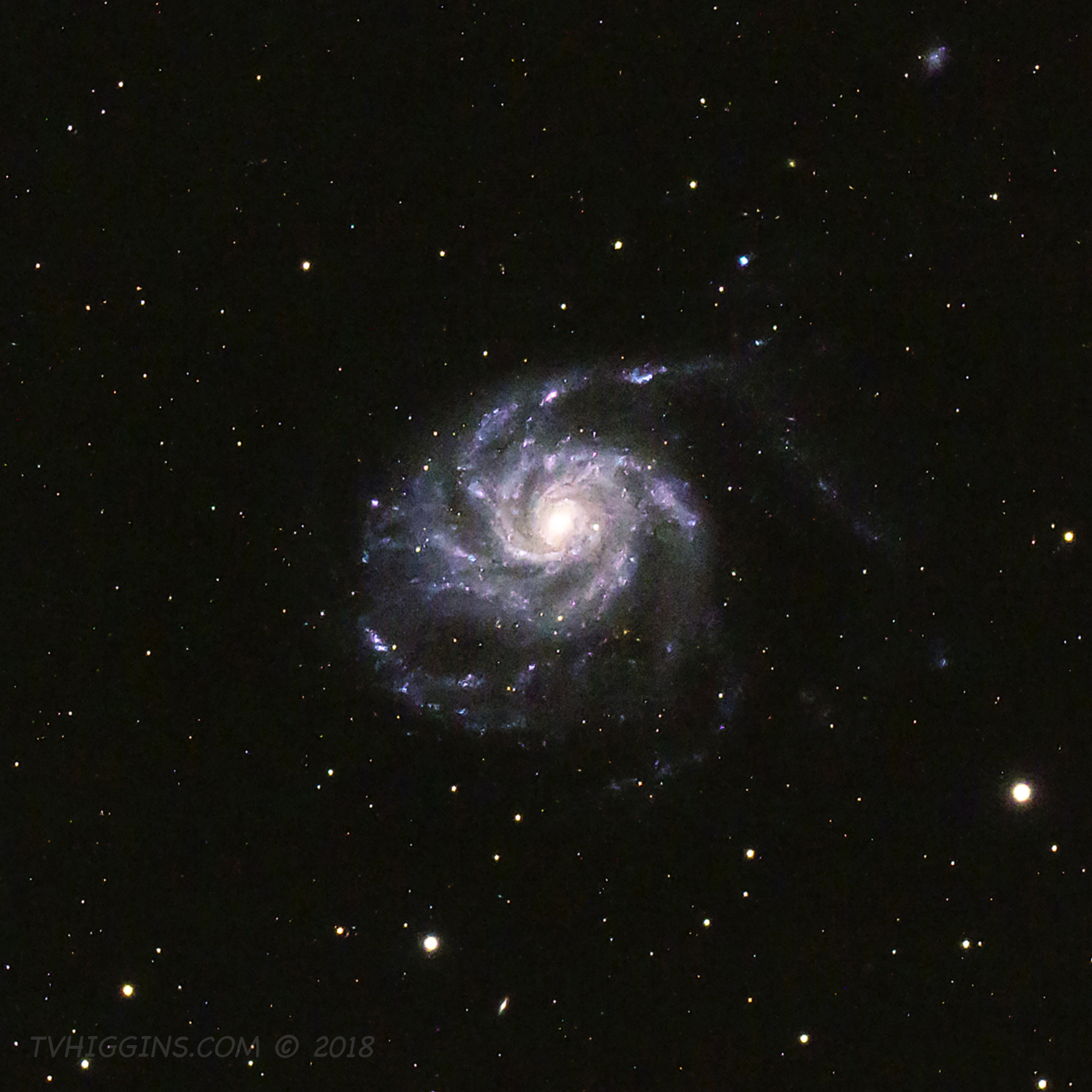- Telescope: Stellarvue SVA130T-IS
- Mount: Losmandy G-11 with Gemini 2 controller
- Autoguiding: Yes
- Optical Configuration: 0.72x field flattener & reducer (f/5)
- Camera: Canon 60Da
- Light Frames: 41, 300-s subframes stacked (205 min.)
- Calibration: None (no darks, no flats, no biases)
- Exposure Time(s): 3.42 h, 205 min. (41 x 5 min.)
- ISO: 800
- Processing: Photoshop CC
- Imaging Location: Sierra Nevada Mountains (Altitude: 8,600 ft)
About 21 million light-years away in the constellation Ursa Major (The Big Dipper), the Pinwheel Galaxy (M101) offers one of the finest examples of a spiral galaxy. Oriented face-on, its spiral structure displays colorful red, white, and blue regions rich in new star formation. The red regions denote vast areas of molecular hydrogen gas, where new stars are born, and the bright blue areas shine from thousands of hot young stars. Astronomers estimate that the Pinwheel Galaxy (M101) is 170,000 light-years in diameter and contains a trillion stars.
The Pinwheel Galaxy has hosted an unusual number of supernovas, with a total of four being observed since 1909. Encounters with five prominent companion galaxies have also led to some obvious distortions of the spiral arms.

Leave a Reply